| Why must China be carbon neutral?
Date:2023-07-04 | Hits:2166
At 9:15 on July 16, 2021, the launch ceremony of the national carbon Market was held simultaneously in Beijing, Shanghai and Wuhan, and the high-profile national carbon market officially began online trading. China's carbon market will become the largest market covering greenhouse gas emissions in the world. The power generation industry is the first industry to be included in the national carbon market, and the remaining steel, nonferrous metals, petrochemical, chemical, building materials, paper, electricity and aviation in the eight energy-consuming industries will be included in the national carbon trading market during the 14th Five-Year Plan period.
How to walk in the forefront of the low-carbon era is a problem that every industry and every enterprise must plan ahead and think carefully. To truly understand carbon neutrality and grasp the historical opportunity of carbon neutrality, we must first deeply understand the strategic significance of carbon neutrality for China and its underlying economic logic.
This article is the latest analysis of carbon neutrality by Professor Liu Jin and researcher Duan Lei of Cheung Kong Graduate School of Business.
Global warming and carbon neutrality
It is a mainstream scientific consensus that human activities since the Industrial Revolution have led to an unusually rapid rise in Earth's temperature. According to NASA data, the current global average surface temperature is about 1.2 ° C higher than in 1880, far beyond the normal range of Earth's average temperature over the previous 10,000 years.
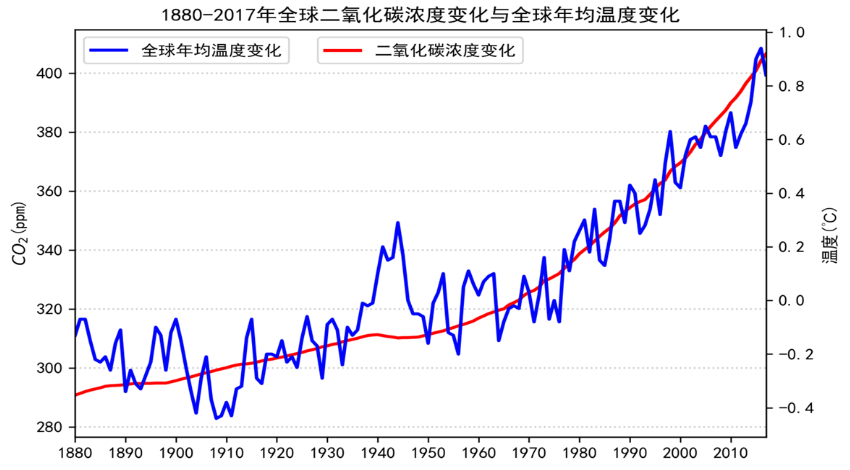
Global warming will bring serious consequences: melting of polar glaciers, rising sea levels, increasing extreme weather disasters, land desertification and ocean acidification.
For example, according to a United Nations report, 6,681 climate disasters were recorded globally between 2000 and 2019, an 83% increase compared to the previous 20 years.
The potential economic costs of allowing global warming to continue are staggering.
William D. Nordhaus, a climate economist and professor at Yale University, has calculated that if global warming reaches 3°C, 4°C and 5°C by the end of the century, the corresponding annual global economic losses would be 2.3%, 4% and 6.5% of GDP, respectively.
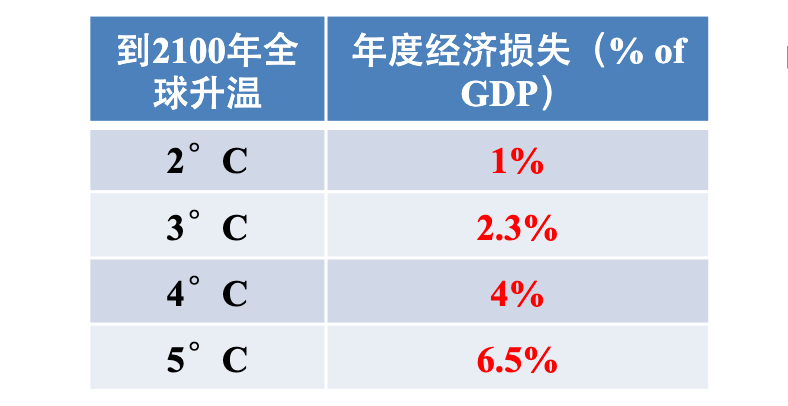
Research by the Federal Reserve's Globalization Institute suggests that without climate action, global temperatures will rise by 3.7°C by 2100, and annual global GDP per capita could lose 7.2 percent.
Compare that with the pandemic now plaguing the world: the negative impact of COVID-19 on global GDP in 2020 will be about 6%, which means that humanity will face a COVID-19 level of economic loss every year by the end of the century because of global warming.
Compared with the war, World War I and World War II brought 29% and 64% economic losses to Germany respectively, but it is necessary to know that the war will end, the economic loss is a "one-time", in terms of annualized or long-term accumulation, the economic loss of global warming may be more terrible than the war.
Global warming is due to human's extensive use of fossil energy since the industrial revolution, large-scale manufacturing, housing infrastructure and other behaviors have emitted a large number of greenhouse gases (mainly carbon dioxide, but also including methane, nitrous oxide and chlorofluorocarbons, etc.), or to use the word that is often said now: carbon emissions.
Regardless of the impact of the epidemic on economic activities, human carbon emissions continue to grow every year, and to limit the harm of global warming, we must rapidly reduce global carbon emissions.
According to the IPCC, it is extremely unlikely that global warming will be controlled at 1.5 ° C by the end of this century, and in order to keep the 2 ° C warming red line, the world needs to rapidly reach carbon neutrality in the next 30 years: that is, by "breaking even" to achieve no increase in atmospheric carbon dioxide.
Why carbon neutrality is the Big economic game
The challenge of achieving carbon neutrality is enormous.
First of all, the use of energy is the most important source of carbon emissions, and human economic development, the improvement of living standards and the use of energy are closely related.
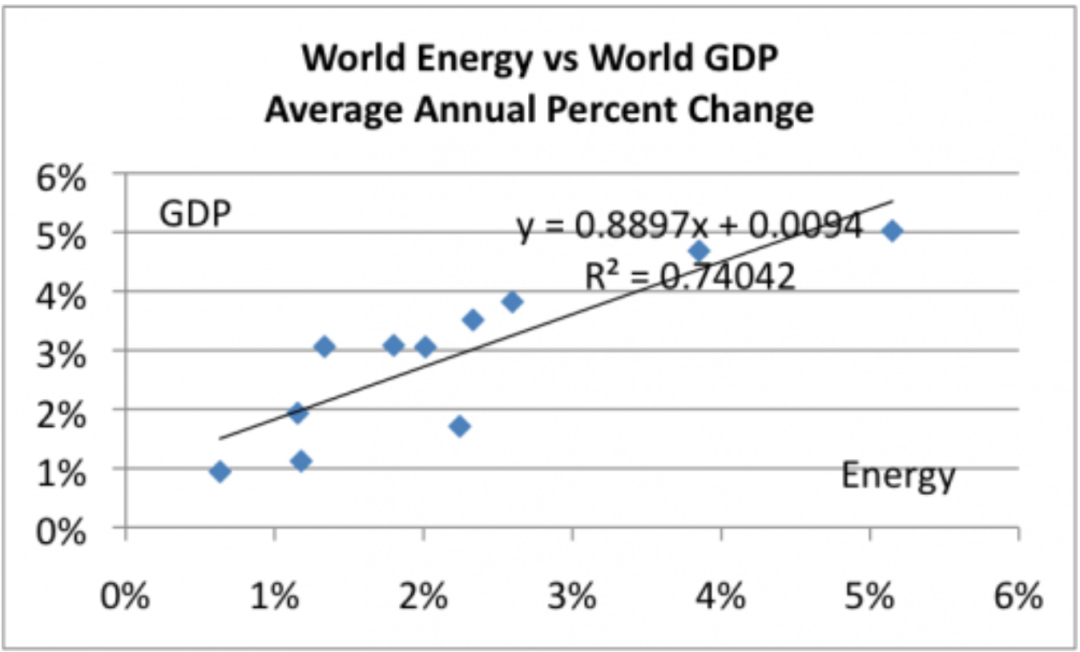
Using historical data to calculate, the correlation coefficient between GDP growth and energy consumption growth is as high as 90%. Persuading people to cut emissions by using less energy and lowering living standards will be extremely difficult.
The development of new energy with low carbon emissions, and the cost of new energy should not be higher than that of fossil energy in order to reduce emissions and allow the economy and living standards to continue to develop.
Second, carbon reduction requires global cooperation, and reaching a consensus on how to share the burden is difficult, and different countries can see the problem from very different perspectives.
In terms of current carbon emissions, China is by far the largest carbon emitter, accounting for 27.9% of global emissions in 2019 (the US accounted for 14.5%), and emissions from other developing countries continue to grow.
However, from the cumulative point of view of history, Western countries have been emitting since the beginning of the Industrial revolution, since 1751, the United States carbon emissions of about 400 billion tons, accounting for 25% of the historical emissions, ranking first in the world, the EU 28 countries contributed 22%, China's emissions accounted for 13%.
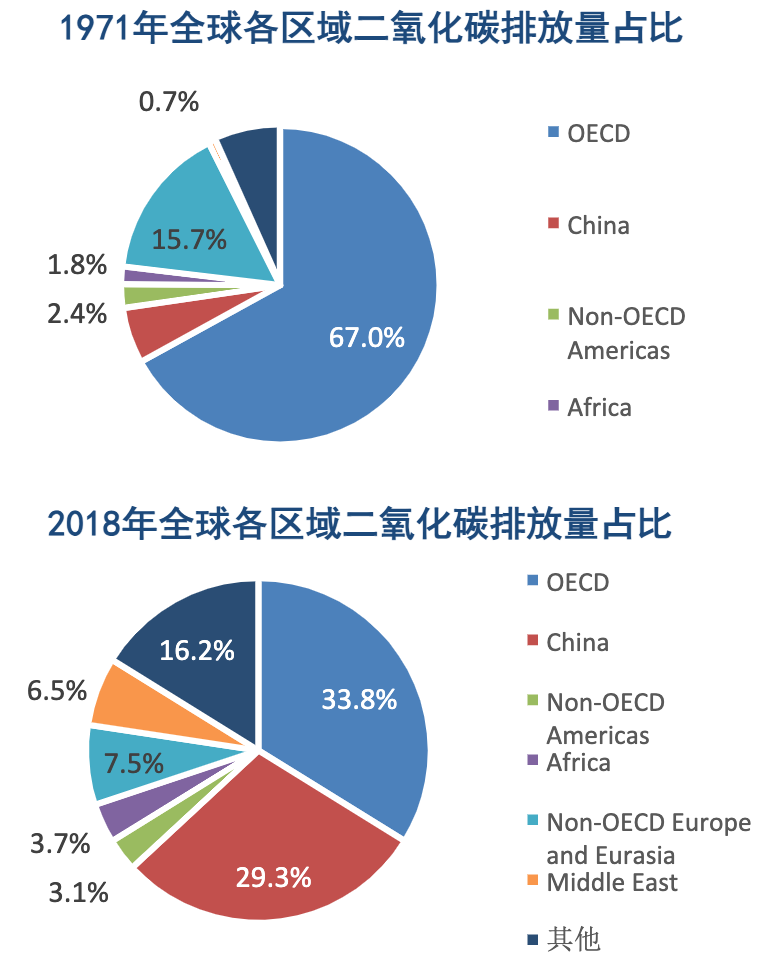
There is a big debate about whether the burden should be shared in terms of historical carbon emissions or current carbon emissions.
In addition, from the perspective of per capita emissions, China's per capita carbon emissions of 7.1 tons/year, only 44% of the United States, 59% of South Korea, and India's per capita carbon emissions are only 26% of China's. Americans live in large suburban houses (average housing size 65 square meters) and consume 3.2 times more energy per capita in the residential sector (heating, cooling, lighting, etc.) than China and 5.4 times that of India. Per capita energy consumption in the transportation sector is 8.7 times that of China and 27.4 times that of India.
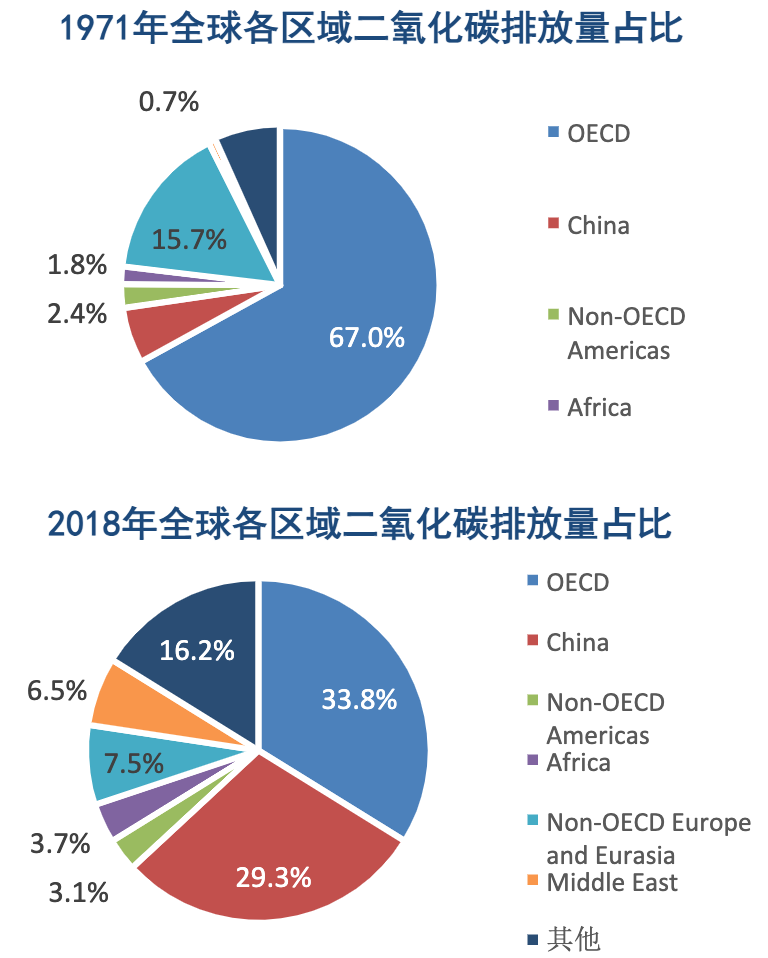
Do people in China or other developing countries have the right to pursue this kind of life as American people? In this sense, there is a core contradiction between developed and developing countries.
Developed countries say that more than 5 billion people live in developing countries, which have the largest total emissions, and that developing countries should bear the responsibility. Developing countries can argue that we have an equal right to development and, historically and per capita, we can still emit more than developed countries. It's a huge two-tier game.
Carbon neutral technology
Achieving carbon neutrality requires a combination of three approaches.
The first is to replace carbon-based energy with new energy at the energy supply side.
The second is to decarbonize energy use. The electrification of the energy use end is a direction, through the electrification of the energy use end to cooperate with the cleanliness of the supply end, forming a virtuous cycle of mutual development, if the fuel vehicle is still the mainstream in the future, it will not be able to match the cleanliness of the energy supply end, nor can it promote the clean transformation of the supply end.
In addition to electrification, there are many carbon emission scenarios at the energy use side that need to find reasonable emission reduction plans.
For example, the economic plan of replacing coal with hydrogen in steelmaking and other scenes in the industrial field; Clean power solutions for aircraft and ships in the transportation sector; In the agricultural sector, solutions to reduce methane emissions in the cattle industry (methane has 25 times the greenhouse effect of carbon dioxide, and cattle production accounts for 65 percent of greenhouse gas emissions in the livestock industry).
Third, carbon sequestration. After the implementation of the method on the supply side and the use side, it is impossible to achieve no carbon emissions at all, at this time, it is necessary to use carbon sequestration to "neutralize" the remaining carbon emissions.
At present, there are two methods: the first method is afforestation, China's efforts in this area have attracted worldwide attention, the forest cover has increased significantly in the past few decades, and the contribution of carbon sequestration is very significant; The second approach is to industrialize carbon capture.
In the process of decarbonization, synchronous coordination between the supply side and the use side is very important.
A study by Argonne National Laboratory in the United States shows that the type of energy supply side has a great impact on the emission reduction advantage of new energy vehicles compared with fuel vehicles. It calculates the emission performance of Toyota Corolla (fuel, 7.13L/100km) and Tesla Model 3 (electric, 54kWh) under different energy supply conditions: If the energy supply is pure thermal power, after the vehicle mileage reaches 126,000 kilometers, Model 3 will have more carbon emission advantages than Corolla; However, if all clean energy is used, the Model 3 will have an emissions advantage after driving more than 13,500 kilometers.
It can be seen that only the cleanliness of power supply can make the electrification of energy consumption more meaningful, and the cleanliness of energy supply side and the electrification of use side must be coordinated in order to effectively control carbon emissions.
Of course, from a historical perspective, the electrification of energy use is itself a trend, such as China's primary energy consumption for power generation increased from 17% in 1985 to 47% in 2017.
The current mission of carbon neutrality will obviously reinforce this trend in the future, and it will also require a cleaner mix of electricity.
According to Ecofys, the climate change costs of coal and natural gas power generation are more than $40 / MWH and $20 / MWH respectively; This cost is only $1.50 / MWH for photovoltaic power generation, and less than $0.1 / MWH for wind and hydropower.
How to solve the economics of carbon neutrality?
In addition to the technical problem, the key to solving the problem of carbon emissions is to solve its economic problem.
There are only two ways to reduce emissions and achieve carbon neutrality from an economic perspective:
First, reduce the cost of new energy. For example, the cost of photovoltaic and wind energy is reduced to below the cost of existing energy, without any stimulus policies, the market will choose to use new energy.
The reduction of the cost of new energy comes from the scale effect brought by the progress of technology and large-scale application. In the early stage, the government generally needs to establish the initial scale effect and promote the investment of enterprises in technology by means of subsidies, so as to drive the positive cycle of cost reduction.
The second is to increase the cost of carbon emissions. If the cost of carbon emissions is high enough, even if the technology is not fully mature, enterprises will invest in the research and application of new energy.
The basic concept of how to increase the cost of carbon emissions is to "tax" carbon emissions: one approach is to tax in an administrative way, setting a policy to determine how much tax you need to pay per ton of emissions, but this administrative approach often leads to all kinds of inefficiencies. Another approach is to use the market to solve the problem, such as setting a quota on China's overall carbon emissions, which can only emit a certain amount of carbon a year, and allowing enterprises to have the right to purchase carbon emission credits from each other. In this way, carbon emissions will generate a market price. In fact, this price is also a carbon tax, which is a tax on carbon emission enterprises by the society.
At present, China's carbon tax is very low, basically negligible. Globally, carbon taxes are currently about $2 per ton. But a carbon tax of $2 per ton is not nearly enough to address climate change (limiting warming to 2 degrees by the end of the century).
According to the IMF, to limit warming to 2 degrees, the price of carbon emissions needs to reach $75 a ton by 2030. According to the latest data from the United Nations Environment Programme, global greenhouse gas emissions in 2019 were equivalent to 59.1 billion tons of carbon dioxide equivalent, and the global carbon tax was as high as $4.4 trillion per year. This calculation suggests that the world would need to spend about 5% of GDP per year on carbon taxes to have any hope of tackling global warming.
Such a large economic investment will obviously challenge the resolve of people and policymakers to reduce emissions, but not to reduce emissions is to pass the serious problem of global warming on to our children and grandchildren.
Why does China have to be carbon neutral?
China's leaders have pledged to reach carbon peak by 2030 and carbon neutrality by 2060, reflecting the country's commitment as a major power that does not grapple with issues such as historical cumulative emissions.
In addition to being a great power, a carbon-neutral program is in China's core national interest.
First of all, China's carbon peak does take time, and cannot be achieved overnight. For example, China's industrial sector uses 48.3% of the energy, while the steel industry and the chemical and petrochemical industry occupy 24% and 21% of the energy use of the industrial sector, respectively, the demand of these industries continues to rise, and it is difficult to reduce emissions in the short term.
Can we reach the carbon peak target in eight more years? There are two sets of data to be confident about:
From the perspective of the stock of steel products, Japan's per capita steel stock is about 11 tons, China's per capita stock is about 6 tons, according to China's current steel production to calculate, in about 10 years China's steel stock can reach the level of Japan, which represents the standard of developed countries.
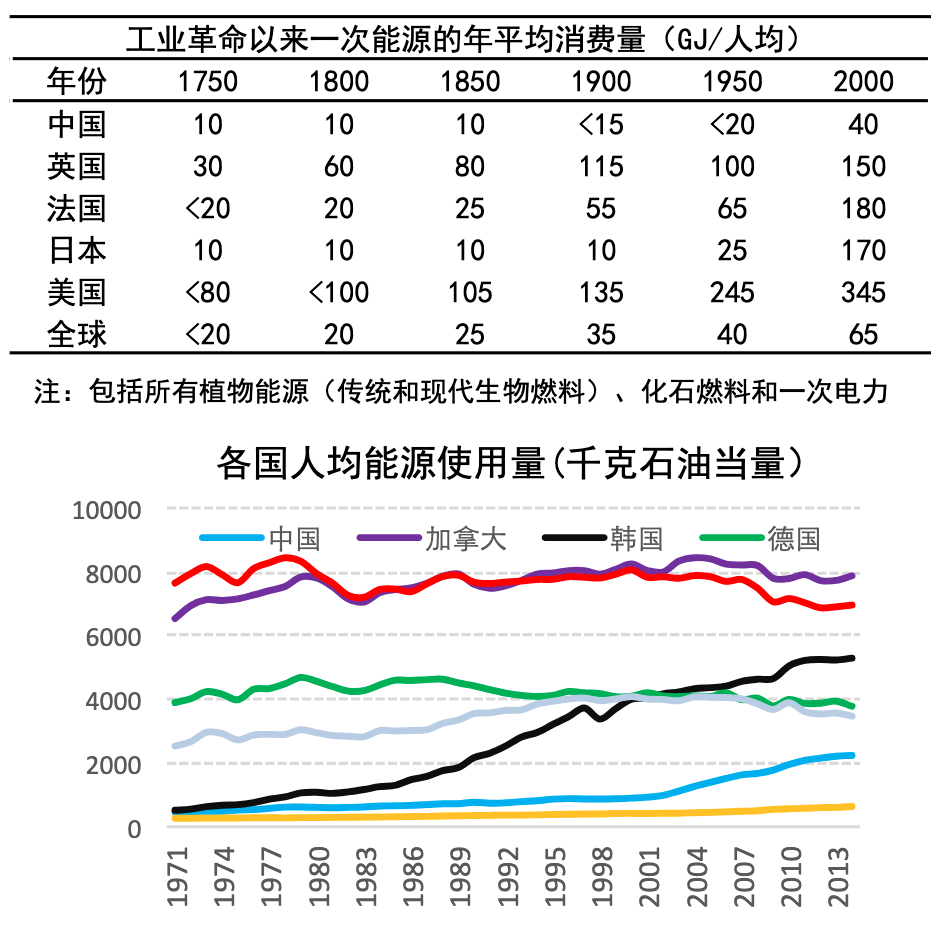
In terms of car ownership data, China's latest data is 199 per thousand people (the end of 2020), South Korea has 434 cars per thousand people (2018), and now China is the world's largest car manufacturer and car market, and in less than 10 years, China's car ownership can also reach the level of South Korea.
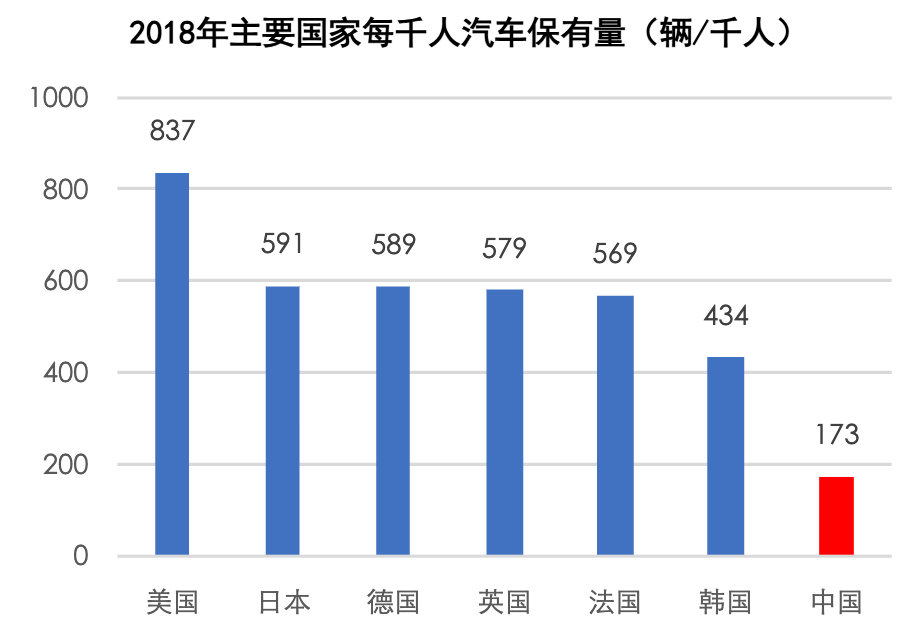
Therefore, from the logic of economic development, by around 2030, China's industrial scale may reach a stable platform.
Second, reducing carbon emissions is good for China's national security. In 2020, China's foreign dependence on oil 73%, natural gas 43%, if one day due to war or other reasons, the Malacca Strait import route is not smooth, China's energy supply and economic development will be greatly affected. But if the bulk of China's energy mix shifts from carbon-based energy to photovoltaics and wind, then the Strait of Malacca will no longer be a controlled chokepoint. Therefore, to control carbon emission and increase the proportion of new energy in the energy structure, in the long term, is a very important consideration of national security strategy, and an important measure to safeguard the national interests of our country.
Third, China is a global leader in industrial development and technological development in the field of new energy. In 2019, the output of silicon wafers, cells and modules in China's photovoltaic industry accounted for about 91%, 79% and 71% of the global total output, respectively, and the output of inverters accounted for more than 80% of the global market. Wind power machine manufacturing accounted for 41% of the world's total output; In the field of lithium batteries, Ningde Era, a global industry giant with a market value of more than 1 trillion yuan, was born; In the field of new energy vehicles, there have also been independent brands such as NIO and Xiaopeng that are very popular in the market.
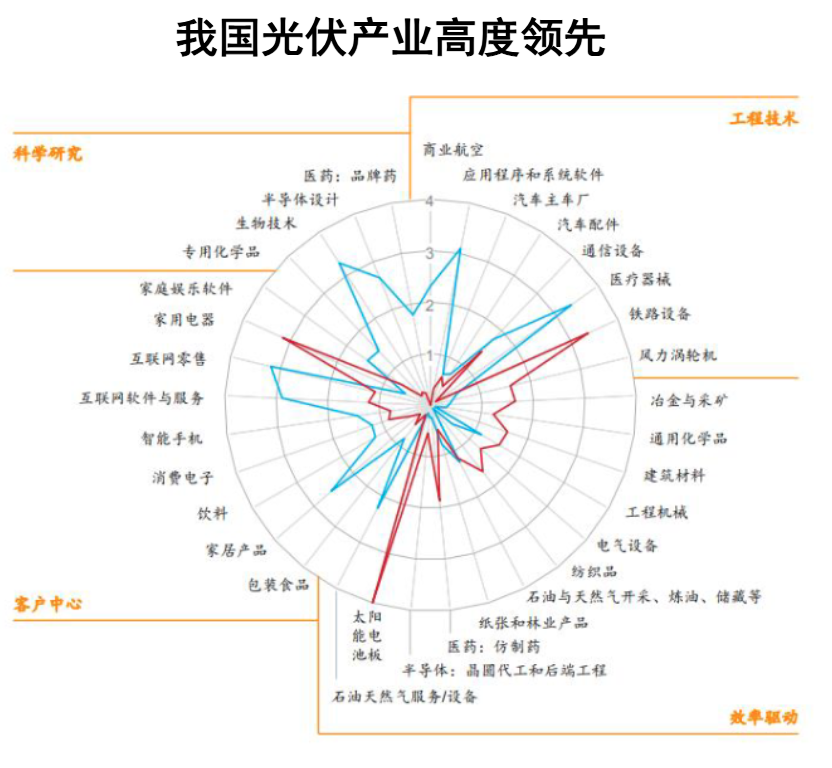
Therefore, if the world wants to reduce carbon emissions, it is a very huge opportunity for China from the commercial and industrial aspects. Carbon reduction can help China in the energy, automotive and other fields to achieve the curve overtaking, to achieve the leap in industrial competitiveness.
Photovoltaics and wind power are ruling the energy world
At present, the global energy pattern is still dominated by fossil energy. Take the global primary energy consumption structure in 2019 as an example: oil, coal and natural gas accounted for 33.1%, 27.0% and 24.2% respectively, and renewable energy such as photovoltaic, wind and hydropower combined only 11.4%.
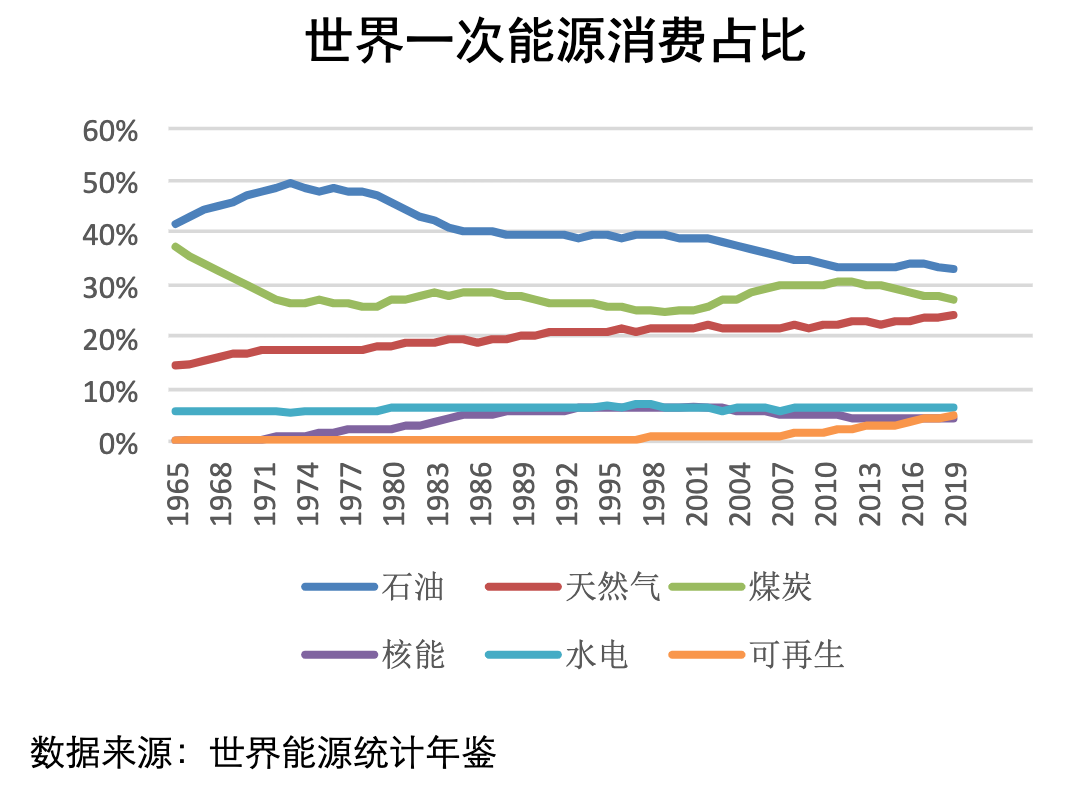
But renewable energy is growing fast.
In fact, since 2013, the world's new power generation capacity, clean energy has continued to exceed traditional energy; According to the Chinese government's plan, the proportion of non-fossil energy in primary energy consumption will reach more than 25% in 2030, and clean energy will dominate the energy structure in 2060.
To a large extent, the confidence in the future development of clean energy comes from the rapid reduction in the cost of photovoltaic and wind power generation in the past years, which has been able to face the competition of traditional energy sources.
According to the International Renewable Energy Agency, from 2010 to 2019, the cost of photovoltaic power generation fell by as much as 82% globally, onshore wind power fell by 39%, and offshore wind power fell by 29%.
Since 2019, photovoltaic and wind energy in many areas of China have reached parity, that is, without subsidies, and are connected to the grid at the same price as thermal power. And with the development of technology and large-scale application, the cost of photovoltaic and wind energy still has considerable potential for further reduction.
Another source of confidence is the potential for clean energy. Taking photovoltaic as an example, without considering the problems of peak and trough matching and transmission losses, to meet China's current electricity consumption, 0.6% of the land area can be covered with photovoltaic panels, that is, a square area of about 237 kilometers long and wide.
Of course, there are still many problems to be solved in the actual development of new energy. For example, the parity Internet access mentioned just now is not a cost calculation of the whole process:
Power technology is demand-driven supply, in order to ensure the real-time balance of power generation, the power grid needs to adjust the power generation side to fit the demand curve. Photovoltaic and wind power generation depends on natural resources (light intensity, wind intensity), its power generation is fluctuating with its resources and uncontrollable, adjustment, absorption costs are much higher than traditional energy sources such as thermal power, including using other energy-assisted methods or new energy storage to adjust frequency and peak, equipment, lines, intelligent transformation of the grid.
Taking the experience of the United Kingdom as an example, before 2010, the cost of the balanced power system in the United Kingdom generally accounted for less than 5% of the entire power generation cost, and with the increase in the proportion of new energy sources in the British energy structure in recent years, the balance cost will rise to about 20% of the power generation cost in 2020.
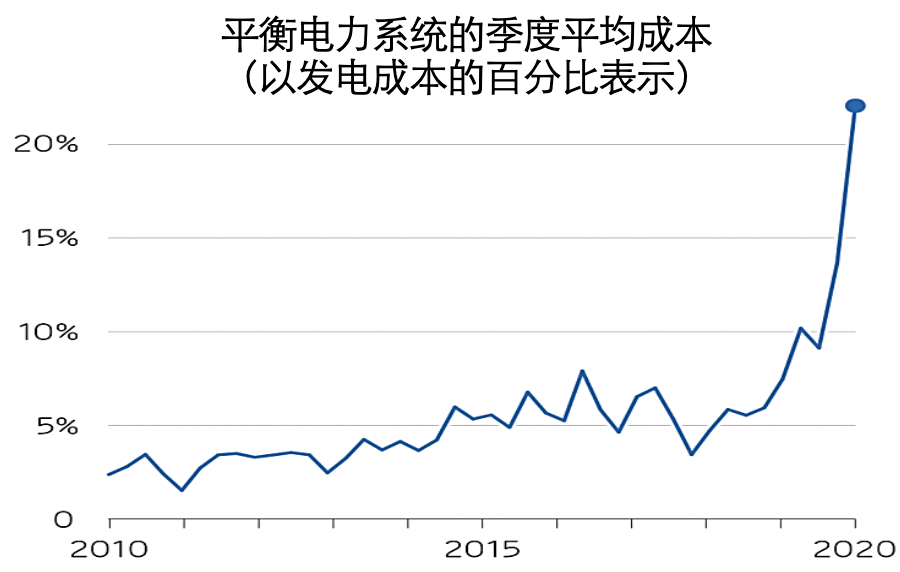
Therefore, energy storage has the opportunity to become an important business opportunity in the future, because energy storage can help solve the problem of new energy consumption, to a large extent to avoid abandoning wind, abandoning light; Because it smooths the power generation curve, it can reduce the pressure on the grid and the cost of renovation.
The total size of the energy storage market in 2020 is 152.8GWh, and the market size is about 230 billion yuan. In the application field of energy storage, 51% are used in the supporting of wind energy and photovoltaic, and the high growth prospects of wind and light will give the energy storage market a very considerable boost.
At the same time, 18% of energy storage is used in the user side, including industrial and commercial and household, because the energy storage itself is the regulation of the power system, peak and valley electricity price arbitrage has become one of the important application scenarios of user-side energy storage.
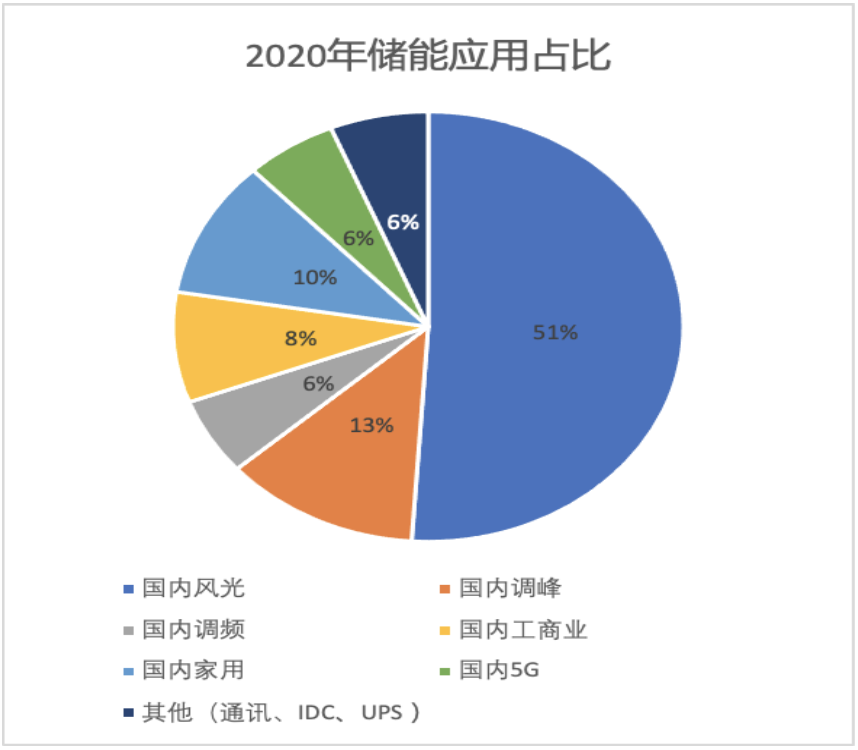
Taking the World Trade Day energy storage Station as an example, the peak-valley price difference in Beijing is about 1 yuan, the trough price is only 0.3 yuan, and the peak price is as high as 1.4 yuan. The energy storage station buys electricity storage at the trough and sells electricity at the peak, which plays the role of cutting the peak and filling the valley, allowing the shopping mall to save 1 million to 2 million yuan of electricity every year.
The most common form of energy storage is pumped storage (90%), but it is not flexible due to geographical conditions. As battery costs fall, battery storage is likely to become a major source of growth for the energy storage market in the future.
At present, battery energy storage is still restricted by the cost of batteries, taking the United States National Laboratory's light storage project as an example, in the case of 25% of energy storage battery capacity and photovoltaic installed capacity, it will increase the cost of the power generation system by about 11%; In the case of a combined volume ratio of 50%, the cost of power generation will increase by up to 27%.

However, with technological progress and scale effects, the price of energy storage batteries is expected to decline in the future, and the energy storage market has the opportunity to usher in rapid development.
Explosive growth of new energy vehicles
In the context of global emission reduction, new energy vehicles have ushered in a golden age of development at both the policy level and the cost level.
In order to achieve the Paris agreement, European countries are scheduled to phase out fuel vehicles after 2025, and completely ban the sale of gasoline and diesel cars. China's Hainan province said it will ban the sale of fuel vehicles by 2030, becoming the first province in China to announce a timetable for banning the sale of fuel vehicles.
The transition from fuel vehicles to new energy vehicles is accelerating. Ernst & Young predicts that sales of electric vehicles in Europe, China and the United States will overtake sales of fuel vehicles within 12 years. According to the China Automobile Association, the next five years, China's new energy vehicle sales growth rate of more than 40%.
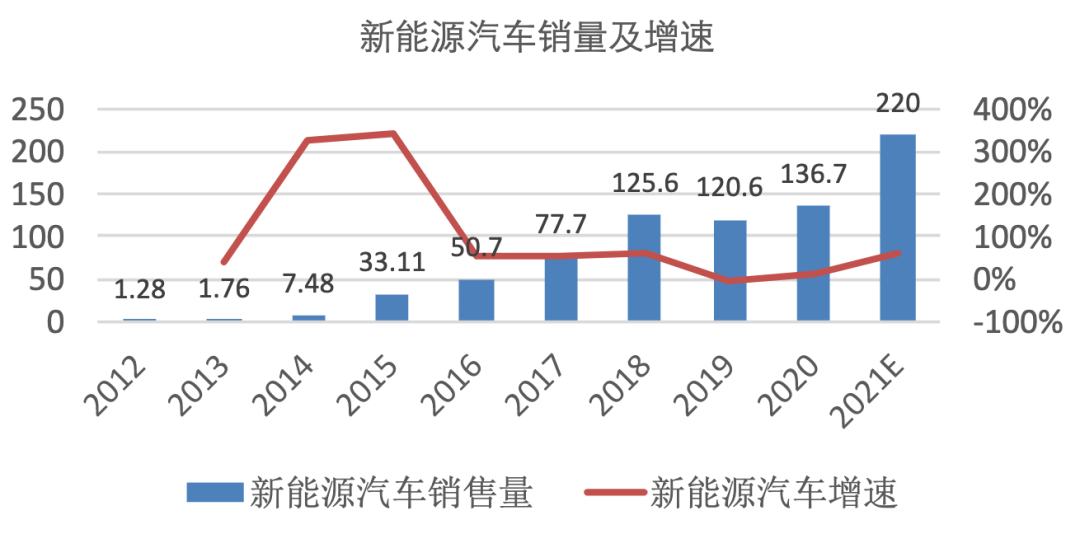
In terms of cost, the field of power batteries has seen a cost decline curve similar to Moore's Law in the past few years.
In the IT sector, Moore's Law has reduced unit computing costs by about 30% per year; In the battery sector, the average annual cost of electricity generation has fallen by about 18% over the past decade. So now the new energy vehicles have more and more advantages in cost, and it seems that this trend has not stopped.
In 2020, new energy vehicles show an explosive growth trend, in this year, the market gradually realized that new energy vehicles not only have advantages in performance; In terms of cost, even without government subsidies, it has a very strong competitiveness.
From high subsidies to subsidies gradually declining, to the cost of fuel vehicles is the same or even lower, the economy of new energy vehicles has been verified in the tortuous and rapid development.
Sum up
The climate problem is the greatest enemy facing mankind today, and its damage is global and civilization-destructive. But, given the externalities of carbon pollution and the huge cost of solving the problem, it will be difficult to get countries around the world to agree on a common enemy. It can be said that there is no solution without consensus. The basis for reaching a global consensus is for China and the United States, as the world's two largest economies, to first reach a consensus between them.
Therefore, in this sense, the global climate issue is a disaster for mankind, but from the perspective of war and peace, it can play a positive role in promoting Sino-US cooperation.
In addition to advances in new energy technologies, significantly increasing the cost of carbon emissions is a central element of the solution to the climate problem. Both carbon taxes and carbon trading are designed to increase the cost of emissions. Because of the pervasive nature of carbon emissions, this cost increase will affect all corners of society, not just industry or new energy companies.
The global climate issue is setting off a revolution in carbon neutrality and new energy that is as big and important as the IT revolution we have experienced for decades.
How to plan ahead and walk in the forefront of the low-carbon era is a problem that every country and every enterprise must think about carefully.

